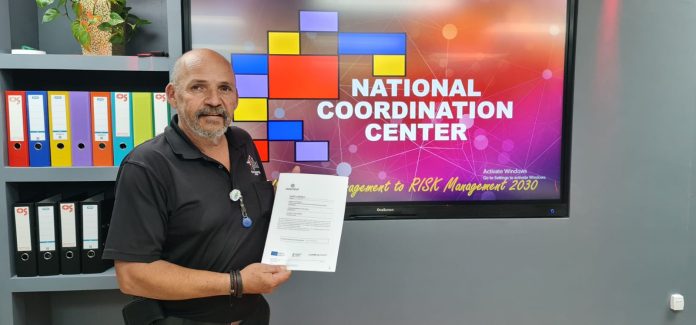(Oranjestad)—Yesterday, the annual tsunami regional exercise, Carib Wave 23, took place. Different countries from the Caribbean region participated simultaneously in this activity and Aruba was one of island that executed this simulation yesterday morning.
The goal of this exercise is to recognize and promote the efforts in preparations for tsunamis in the Caribbean and nearby regions. Every year, UNESCO organizes this training simulation in order to monitor the preparations from countries. In other words, to check how well-prepared these countries are in the case of a tsunami.
For this training, there were two different simulations executed, and every country that participated chose the scenario that fits with their own targets. The first scenario simulated a tsunami generated by a 7.6 magnitude earthquake in the golf of Honduras. The second scenario simulated a tsunami caused by the eruption of the Monte Pelée volcano.
In connection to this exercise, the director of the Disaster Response Office (BRA), Rino Hermans, explained during a press conference for local news outlets what exactly is taking place, which instances are participating y how this helps for future preparations.
Hermans explained that climate change is influencing the effects on a global scale and that this increases the risk for all countries. Aruba participates in this training annually, and is one of the countries that aggressively participates. He indicated that in the past, it was only first responders that participate in this training, along with the hospital. But now there are several hotels and schools that also participate. Additionally, 140 governmental departments are also joining in on the training this year, because every department needs to know what to do in emergency cases where a tsunami is headed towards the island.
He added that BRA trains for 24 hours for two consecutive days, along with the schools. The government departments that also participated have 5 years to establish their emergency plan to know what to do when a tsunami alert goes off. Hermans also explained that the government was given 72 hours in advance to evaluate what they have already established and what the agreements are for simulation training.
Hermans remarked that the infrastructure is the main concern for them and that they will begin working on it this year. The director indicated that Aruba must be on an international level when it comes to preparations by 2030. This has already been determined in a study back in 2014 for countries around the world, where they have already established that every country needs a concrete plan and that they must also help reduce the risk of a tsunami.
In this study, it has been shown that people often leave the responsibility to first responders alone. However, Hermans pointed out that if a tsunami does indeed ever strike Aruba, there will be around 40,000 people who will be affected by it, along with many buildings and structures on the island. He stated that the commercial sector is on the south side of the island, which is the most vulnerable part.
“Let’s not forget that a tsunami wave is one of energy and not wind. Wind waves hit the coast and goes back in, while an energy wave keeps pushing until it reaches a hill or mountain; that’s when it calms down. If a tsunami every hits the northern part of the island, it will go around the island and go back in. The theory that this will go towards the Venezuelan coast and bounce back applies for wind waves,” he explained.
Hermans highlighted that we cannot just assume that the first impact of a tsunami on the island will not be big, because the moment the tide pulls in, the tsunami will come back and consume everything in its way.
“It’s true that hurricanes call for attention. It’s true that that the hurricane period is 6 months long, but a tsunami is very worrisome. If it wasn’t, UNESCO and the UN wouldn’t have organized these training for the Caribbean islands,” he stated.
In terms of the community and how they will receive more information about the tsunami, Hermans indicated that there are various trajectories that are taking place. For the next 12 months, the first execution phases will take place to complete the project.
Hermans underlines that the early warning project is a very big project: it’s very costly, but this project does not leave out infrastructure nor lives. “The public needs to understand that the world is changing, and we need to be prepared for it. First as a family, then as an organization and later as a country. Do not leave the responsibility to the government or first responders alone, because after 10 days, there will be no food, no dock, no airport. It’s up to you to protect your family.”

















